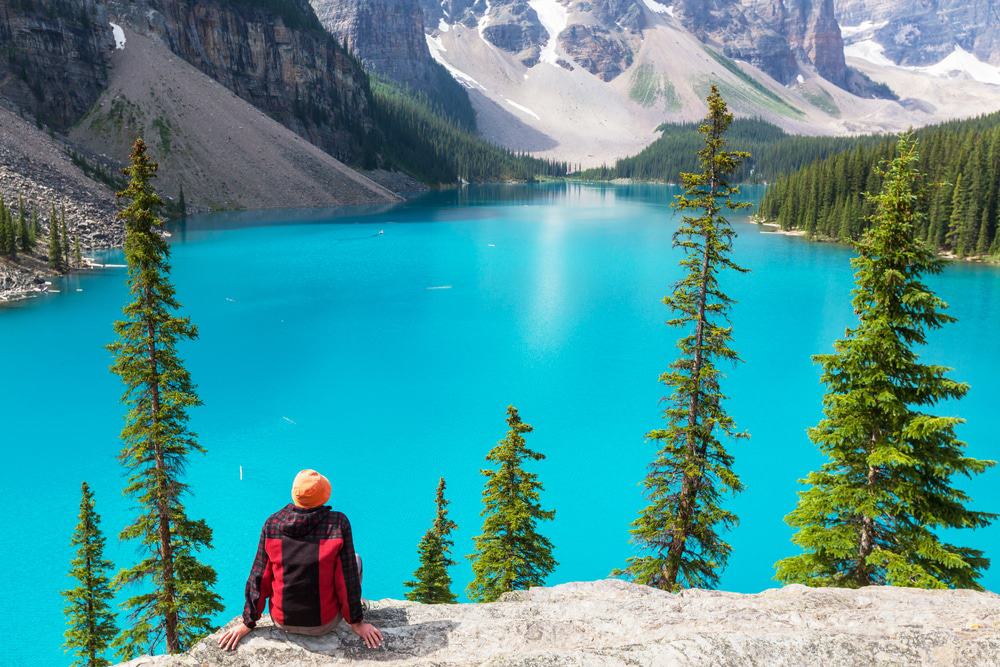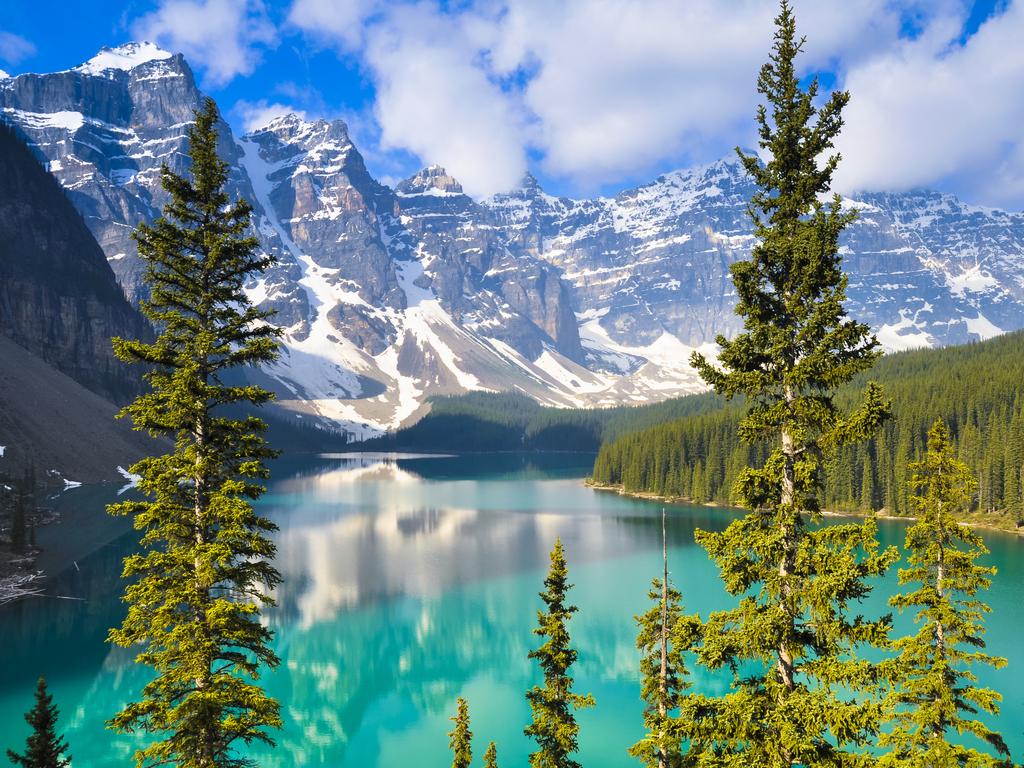
Canada, a land of vast wilderness, vibrant cities, and a rich tapestry of cultures, consistently ranks as a top travel destination for a reason. From the majestic Rockies to the bustling metropolises, the Great White North offers an unparalleled experience for every kind of traveler. Whether you’re drawn to its compelling history, breathtaking natural beauty, or its diverse culinary scene, Canada promises an unforgettable adventure. This comprehensive guide will equip you with everything you need to plan your perfect Canadian escape.
A Glimpse into Canada’s Storied Past
To truly appreciate Canada, understanding its history is key. Its story is one of Indigenous resilience, European exploration and settlement, and the eventual formation of a vast, multicultural nation. For millennia, Indigenous peoples have inhabited this land, leaving behind a profound cultural legacy evident in place names, art, and traditions. European exploration began in the 15th century, with figures like Jacques Cartier and John Cabot charting its coastlines. French colonization in the 17th century established New France, while British influence grew, leading to a series of conflicts and ultimately, British dominance.
Related Articles about The Great White North Beckons: A Comprehensive Guide to Experiencing the Best of Canada:
- Indonesia: A Journey Through the Archipelago of Wonders
- Unveiling the Charms of France: A Guide to the Best Tourist Attractions
- Unveiling the Treasures of Turkey: A Journey Through History, Culture, and Breathtaking Landscapes
- Echoes of Olympus: Unveiling the Best Tourist Attractions in Greece
- Thailand: A Tapestry of Enchantment – Unveiling the Kingdom’s Best Tourist Attractions
The Confederation in 1867, uniting Upper and Lower Canada, New Brunswick, and Nova Scotia, marked the birth of modern Canada. The subsequent decades saw westward expansion, the construction of the Canadian Pacific Railway, and the establishment of distinct national policies. Canada’s role in World Wars I and II cemented its international standing, and its commitment to multiculturalism and peacekeeping has defined its identity in the 20th and 21st centuries. From the echoes of ancient Indigenous civilizations to the stories of pioneering settlers and the ongoing evolution of its diverse society, Canada’s history is a compelling narrative woven into its landscapes and communities.
Top Attractions: Unveiling Canada’s Treasures
Canada boasts an astonishing array of attractions, catering to every interest. Here are some of the absolute must-sees:
1. The Canadian Rockies (Banff and Jasper National Parks, Alberta): This is arguably Canada’s most iconic natural wonder. Towering snow-capped peaks, turquoise glacial lakes like Louise and Moraine, and vast evergreen forests create a postcard-perfect landscape. Hike through stunning trails, spot wildlife like elk and bears, and marvel at the sheer grandeur of nature. Banff townsite offers charming shops, restaurants, and world-class resorts, while Jasper provides a more rugged and serene experience.
2. Niagara Falls (Ontario): A true marvel of nature, Niagara Falls is a breathtaking spectacle of cascading water. Whether viewed from the Canadian side’s observation decks, taken on a boat tour to the base of the falls (Hornblower Niagara Cruises), or explored through the tunnels behind the falls (Journey Behind the Falls), the sheer power and beauty are awe-inspiring. The surrounding Niagara Parks area offers attractions like botanical gardens and historical sites.
3. Old Quebec (Quebec City, Quebec): Step back in time in North America’s only walled city north of Mexico. Cobblestone streets, historic architecture, and the iconic Fairmont Le Château Frontenac transport you to a bygone era. Explore the Plains of Abraham, wander through the charming Petit Champlain district, and soak in the unique French-Canadian culture.
4. Vancouver (British Columbia): This vibrant coastal city seamlessly blends urban sophistication with stunning natural beauty. Explore Stanley Park, a sprawling urban oasis offering seawall walks, totem poles, and pristine beaches. Wander through Granville Island Market for local produce and crafts, and explore diverse neighborhoods like Gastown and Kitsilano. The nearby Whistler Blackcomb resort offers world-class skiing and snowboarding in winter, and incredible hiking and biking in summer.
5. Toronto (Ontario): Canada’s largest city is a multicultural hub offering something for everyone. Ascend the CN Tower for panoramic city views, explore the world-renowned Royal Ontario Museum (ROM) and the Art Gallery of Ontario (AGO), and catch a show in the vibrant Entertainment District. Don’t miss the iconic St. Lawrence Market for a culinary adventure.
6. The Maritimes (Nova Scotia, Prince Edward Island, New Brunswick): For a taste of coastal charm and maritime heritage, head east. Explore the rugged beauty of the Cabot Trail in Cape Breton, Nova Scotia, visit the charming red sand beaches and rolling hills of Prince Edward Island (inspiration for Anne of Green Gables), and discover the stunning Bay of Fundy in New Brunswick, home to the world’s highest tides.
7. The Canadian Prairies (Manitoba, Saskatchewan, Alberta): While often overlooked, the Prairies offer vast open skies, unique wildlife, and a sense of profound tranquility. Explore Riding Mountain National Park in Manitoba, discover the badlands of Drumheller in Alberta (dinosaur country!), and experience the vibrant city of Calgary.
8. The Yukon and Northwest Territories: For the truly adventurous, the Canadian North offers unparalleled wilderness, the magic of the Northern Lights, and a glimpse into Indigenous culture. Explore Dawson City, the heart of the Klondike Gold Rush, and witness the aurora borealis in Yellowknife.
Travel Tips for a Seamless Canadian Journey
- Visa Requirements: Check the visa requirements for your nationality well in advance of your trip. Many visitors can enter Canada visa-free for short stays.
- Currency: The official currency is the Canadian Dollar (CAD). Credit cards are widely accepted, but it’s wise to carry some cash for smaller purchases.
- Language: Canada has two official languages: English and French. While English is spoken across most of the country, French is the primary language in Quebec. Learning a few basic French phrases can be appreciated.
- Tipping: Tipping is customary in restaurants (15-20%), for taxi drivers, hotel staff, and tour guides.
- Connectivity: Wi-Fi is widely available in hotels, cafes, and public spaces. Consider purchasing a local SIM card for affordable data if needed.
- Safety: Canada is a very safe country, but it’s always wise to exercise common sense and be aware of your surroundings.
- Respect Indigenous Cultures: Be mindful and respectful when visiting Indigenous lands and communities. Learn about their history and traditions and support Indigenous-owned businesses.
Best Time to Visit: Embracing Canada’s Seasons
Canada experiences distinct seasons, each offering a unique appeal:
- Spring (April-May): Witness the thawing of the land, blooming wildflowers, and fewer crowds. This is a great time for city breaks and exploring the milder regions.
- Summer (June-August): The most popular time to visit, with warm weather perfect for outdoor activities like hiking, camping, and exploring national parks. Festivals and events are abundant. Be prepared for crowds and higher prices.
- Autumn (September-October): Experience the breathtaking spectacle of fall foliage, particularly in Eastern Canada. The weather is crisp and pleasant, and there are fewer tourists than in summer.
- Winter (November-March): Ideal for winter sports enthusiasts, offering world-class skiing, snowboarding, and ice skating. Witness the magic of the Northern Lights in the North. Cities offer cozy cafes and festive holiday markets.
Nearby Hotels: Comfort and Convenience
Canada offers a wide range of accommodation options to suit every budget and preference.
- Luxury: Iconic hotels like the Fairmont properties (e.g., Banff Springs, Château Frontenac), the Ritz-Carlton in Toronto and Montreal, and boutique hotels in major cities offer opulent experiences.
- Mid-Range: Chain hotels like Marriott, Hilton, and Radisson are readily available in cities and tourist areas, providing comfortable and reliable stays.
- Budget-Friendly: Hostels, guesthouses, and budget hotel chains offer affordable options. Consider Airbnb for unique local experiences.
- Unique Stays: Look for charming bed and breakfasts in smaller towns, rustic cabins in national parks, or even glamping experiences for a more immersive connection with nature.
When choosing a hotel, consider its proximity to the attractions you plan to visit, as well as its accessibility to public transportation.
Local Food: A Culinary Journey Across Canada
Canadian cuisine is a delicious reflection of its multicultural heritage and abundant natural resources.
- Poutine: The quintessential Canadian dish, originating from Quebec, this delightful creation consists of French fries, cheese curds, and hot gravy. Variations abound, making it a must-try.
- Maple Syrup: Canada is the world’s largest producer of maple syrup. Enjoy it on pancakes, waffles, or in various desserts. Don’t miss trying maple candy or maple butter.
- Seafood: Along the coasts, indulge in fresh seafood. From East Coast lobster and scallops to West Coast salmon and Pacific oysters, the options are divine.
- Peameal Bacon: A lean, unsmoked pork loin, often coated in cornmeal, a breakfast staple in Ontario.
- Butter Tarts: A sweet and flaky pastry tart filled with a rich, buttery, sugary filling. A classic Canadian dessert.
- Bannock: A traditional Indigenous flatbread, often fried or baked, enjoyed with various toppings.
- Wild Game: In some regions, try dishes featuring venison, bison, or elk.
- Multicultural Delights: Due to its diverse population, you’ll find exceptional Indian, Chinese, Italian, Vietnamese, and Greek cuisine, among many others, in major cities.
Don’t hesitate to explore local markets and independent eateries for authentic culinary experiences.
Transportation Options: Navigating the Great White North
Canada’s vastness requires strategic transportation planning:
- Flying: For long distances between major cities, flying is the most efficient option. Air Canada and WestJet are the primary carriers, with regional airlines serving smaller communities.
- Trains: VIA Rail Canada offers scenic train journeys across the country, particularly between cities in Southern Ontario and Quebec, and through the Rockies. While often slower than flying, it provides a comfortable and picturesque way to travel.
- Buses: Greyhound Canada and other regional bus companies offer extensive networks, providing a more economical option for intercity travel.
- Driving: Renting a car is ideal for exploring national parks, scenic routes, and smaller towns at your own pace. Be prepared for long drives, especially in Western Canada.
- Public Transportation: Major cities like Toronto, Montreal, Vancouver, and Calgary have extensive public transportation systems, including subways, buses, and light rail, making it easy to navigate urban areas without a car.
- Ferries: Essential for exploring coastal regions and islands, particularly in British Columbia and the Maritimes.
Conclusion:
Canada is a land of unparalleled beauty, rich history, and vibrant culture, offering an unforgettable experience for every traveler. From the majestic peaks of the Rockies to the historic charm of Old Quebec, and the bustling streets of its multicultural cities, the Great White North beckons with open arms. By understanding its history, planning your itinerary around its top attractions, and embracing its diverse culinary scene, you’re well on your way to discovering the magic of Canada. So pack your bags, prepare for adventure, and let the wonders of this extraordinary country unfold before you.








